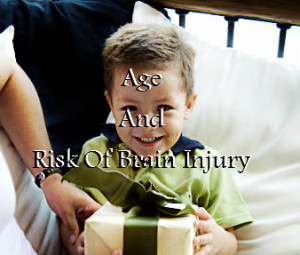
A recently reported study may help parents and others to protect their children from head and brain injuries.
Researchers from the Washington University School of Medicine, University of California-Davis School of Medicine and others conducted the study, “Epidemiology of Blunt Head Trauma in Children in U.S. Emergency Departments.” The researchers reported their findings in the November 2014 issue of the New England Journal of Medicine.
The study examined 43,399 cases of blunt head trauma among children through 17. Based on their findings, the researchers were able to delineate by age what type of accidents were most likely to serve as the cause a child’s head injury.
Overall, falls proved to be the most frequent cause of head and brain injury for children under the age of 12, while assaults, motor vehicle crashes and sports activities such as bicycling were the most frequent causes of those injuries among older children.
An appendix to the study provides the three most likely causes of a head / traumatic brain injury (TBI) for each age group. They are:
| Cause | Pct. | |
|---|---|---|
| Fall from elevation | 54% | |
| Fall down stairs | 14% | |
| Fall to ground while standing walking or running | 9% |
| Cause | Pct. | |
|---|---|---|
| Fall from elevation | 24% | |
| Fall to ground while standing walking or running | 14% | |
| Accidental blow to head by object | 9% |
| Cause | Pct. | |
|---|---|---|
| Assault | 24% | |
| Sports | 19% | |
| Motor vehicle crash (occupant) | 18% |
Other common causes of head injury among children that researchers found include:
- Struck by motor vehicle (as a pedestrian)
- Struck by motor vehicle while riding a bicycle
- Bicycle crash or fall from bicycle while riding
- Collision with stationary object while walking or running.
Overall, subdural hematoma, a collection of blood between the layers of tissue that surround the brain, was the most common injury. This was followed by subarachnoid hemorrhage, which is the potentially fatal bursting of a blood vessel in the brain, and cerebral contusion, or bruising of the brain, with great variability according to age.
Nearly half of the children whose traumatic brain injury was identified by a CT scan had more than one type of brain injury, the study found.
Applying Study’s Findings to Head and Brain Injury Prevention
The researchers reported that children who wore bicycle helmets or lap and shoulder seat belts in cars were less likely to suffer a head injury than children without such protection.
They suggest that their findings may be useful in the development of future injury-prevention measures and age-appropriate interventions.
For example, campaigns could be crafted to raise parents’ awareness of the fall risks that their toddlers face at home, in the car, at day care or on the playground.
Additionally, more attention could be given to educating teens about the head and brain injury risks that arise when they fail to wear their seat belts while driving or while riding bicycles, skateboarding, skiing or engaging in other recreational activities. Such campaigns could also educate parents on how to identify the signs of concussions and how to effectively manage such brain injuries.
